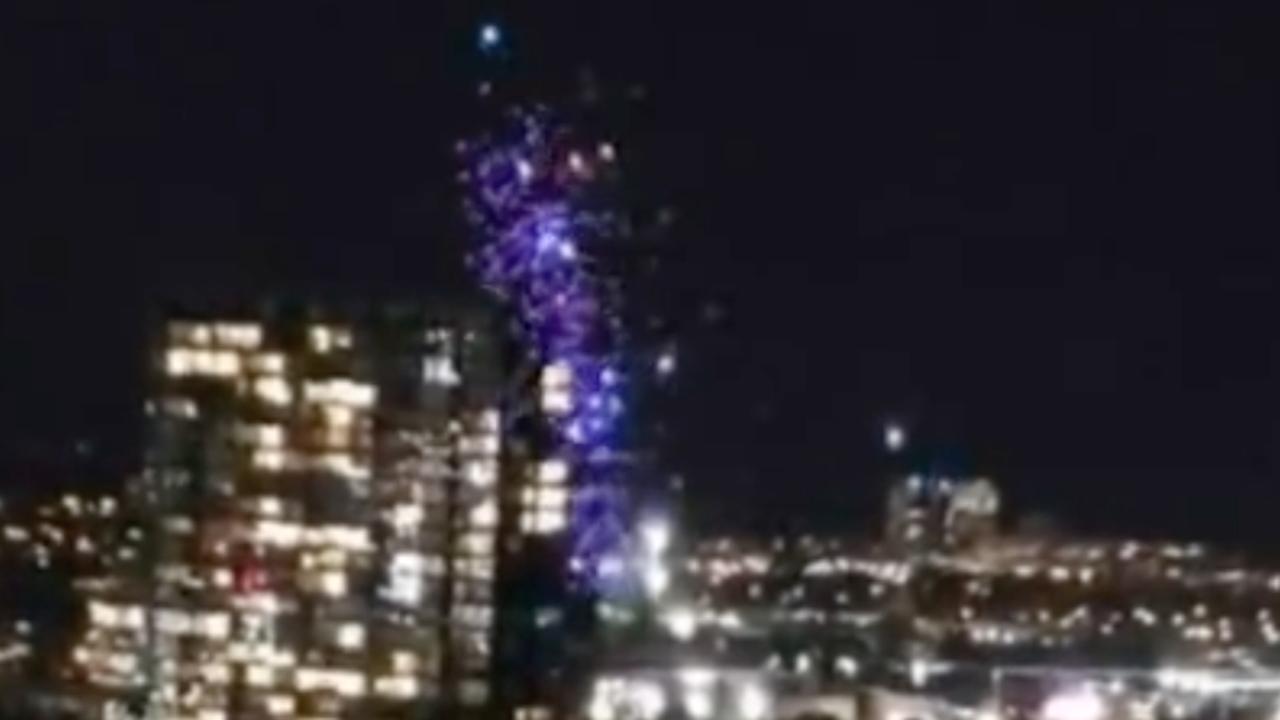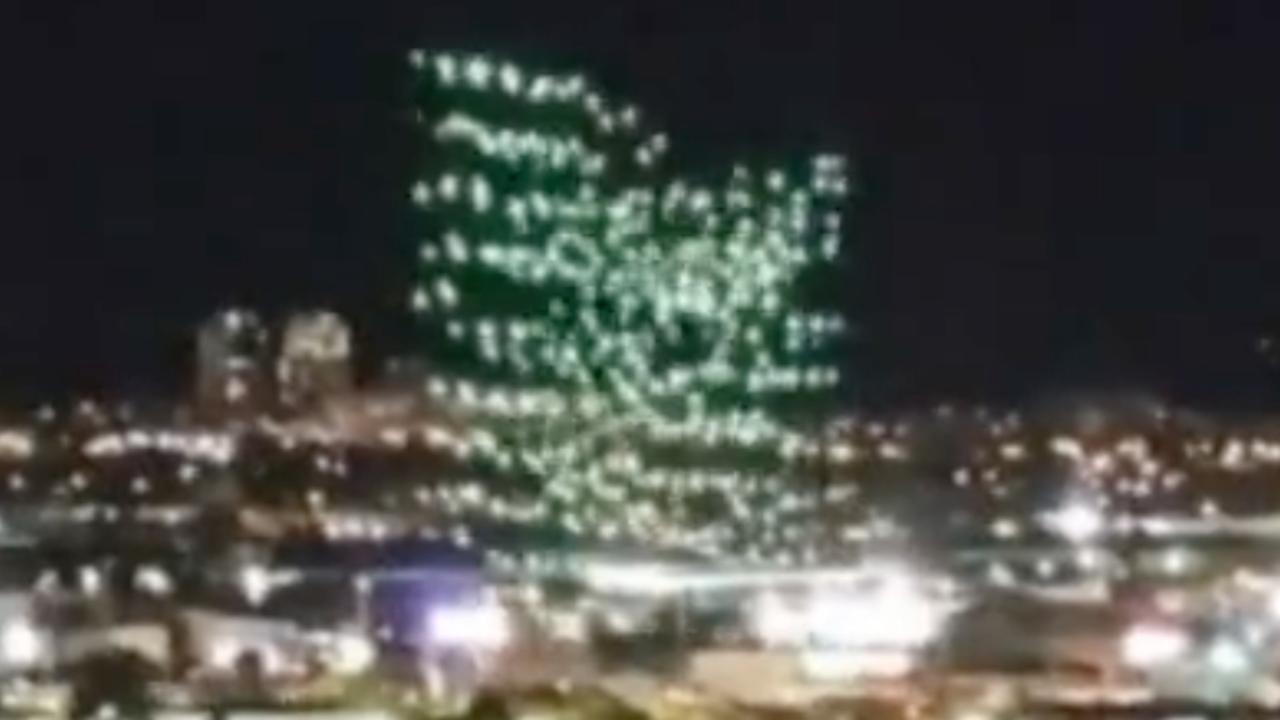Orlando drone show malfunction: A spectacular display turned unexpectedly chaotic when a technical failure disrupted a highly anticipated drone show. This incident serves as a stark reminder of the complexities and potential risks involved in large-scale drone operations, prompting crucial discussions about safety protocols, technological reliability, and the impact of such malfunctions on public perception and the entertainment industry.
The event unfolded rapidly, leaving both spectators and organizers scrambling to understand what had gone wrong.
The recent Orlando drone show malfunction highlighted the complexities of large-scale drone operations. Successfully managing such events requires meticulous planning and reliable technology, a stark contrast to the seemingly simpler, yet equally crucial, monitoring provided by the cobequid pass camera , which offers a different perspective on technological surveillance. The Orlando incident underscores the need for robust safety protocols, regardless of the scale or purpose of the drone deployment.
This analysis delves into the sequence of events, exploring the technical aspects of the malfunction, its impact, the public reaction, and the resulting implications for future drone shows. We will examine potential causes, investigate safety measures, and analyze media coverage to provide a complete picture of this significant event.
The Orlando drone show malfunction highlights the complexities of large-scale drone operations. Such incidents underscore the need for robust safety protocols, a concern amplified when considering the scale of events like the recent ukraine drone attack on russia , where similar technological challenges, albeit on a vastly different scale, could have significant consequences. Ultimately, both incidents emphasize the importance of reliable technology and comprehensive planning in drone deployments.
The Orlando Drone Show Malfunction
The recent Orlando drone show malfunction captivated audiences and sparked widespread discussion about drone show safety and regulations. This incident serves as a critical case study highlighting the complexities and potential risks involved in large-scale drone light displays. The following sections detail the events, technical aspects, impact, and public reaction, offering insights into improving safety protocols for future drone shows.
The Orlando Drone Show Incident: A Detailed Account
The Orlando drone show, planned as a spectacular visual spectacle, experienced a significant malfunction during its performance. Initial reports indicated a loss of control over a portion of the drone swarm, leading to erratic movements and deviations from the pre-programmed choreography. The exact number of malfunctioning drones varied in initial reports, with some suggesting a smaller cluster while others claimed a larger portion of the fleet was affected.
The show was immediately halted, leaving the audience with a mix of disappointment and concern. Eyewitnesses described a sudden chaotic shift in the drones’ formations, with some drones veering off course and exhibiting unpredictable flight patterns. Organizers reacted swiftly, activating emergency protocols and ensuring the safe landing of all drones. Audience members expressed a range of reactions, from initial confusion and concern to eventual understanding and appreciation for the rapid response of the organizers.
One eyewitness reported feeling a sense of awe quickly turning to worry as the drones strayed from their planned formations. Another described a collective gasp from the crowd as the display went awry.
Technical Aspects of the Malfunction, Orlando drone show malfunction
Several factors could have contributed to the drone malfunction. Potential causes include software glitches, hardware failures, or interference from external sources like GPS signal disruption or electromagnetic interference. While specific details regarding the technology employed remain largely undisclosed, it’s likely that the show utilized a sophisticated system of GPS-guided drones with pre-programmed flight paths and synchronized lighting effects. The safety protocols implemented, while not publicly detailed, likely included redundant systems, emergency landing procedures, and potentially geo-fencing to limit the drones’ flight area.
Whether these protocols were fully effective during the malfunction requires further investigation. The exact type of drones used and the specifics of their control systems are yet to be publicly confirmed.
| Time | Planned Action | Actual Action | Discrepancy |
|---|---|---|---|
| 8:15 PM | Formation of a large heart shape | Partial formation, with some drones drifting | Incomplete formation, drones deviated from planned path |
| 8:17 PM | Transition to a cascading waterfall effect | Several drones fell out of formation, erratic movements | Complete failure of the planned transition; drones displayed uncontrolled movement |
| 8:18 PM | Grand finale: a complex geometric pattern | Show aborted, drones began controlled descent | Finale completely cancelled due to malfunction |
Impact and Aftermath of the Malfunction
The malfunction had significant immediate and long-term effects. The show’s organizers faced reputational damage and potential financial losses due to refunds and the cost of investigation. While the financial impact is difficult to quantify without official statements, it likely includes costs associated with repairing or replacing damaged drones, refunding ticket holders, and potential legal fees. The incident prompted a review of safety regulations and procedures, potentially leading to stricter guidelines for future drone shows in Orlando and beyond.
Official investigations are likely underway to determine the root cause of the malfunction and to implement preventative measures.
Public Perception and Media Coverage
Social media immediately buzzed with reactions ranging from disappointment to amusement and concern. Traditional news outlets covered the event extensively, highlighting both the spectacular nature of the planned show and the unexpected malfunction. Early reports focused on the visual aspects of the malfunction, while later coverage delved into potential causes and safety concerns. Some media outlets emphasized the organizers’ quick response, while others focused on the potential risks of large-scale drone shows.
A hypothetical media statement from the organizers might emphasize their commitment to safety, express regret for the malfunction, and detail the ongoing investigation and steps taken to prevent future incidents.
Drone Show Safety and Regulation
Existing regulations for drone shows vary across jurisdictions, often focusing on airspace restrictions, pilot licensing, and operational safety guidelines. Improvements to safety protocols could include enhanced redundancy in control systems, more robust GPS signal backup systems, and improved communication between drones and controllers. A comparison of Orlando’s regulations with those of other major cities that host drone shows would reveal variations in approaches to safety and oversight.
The recent Orlando drone show malfunction, causing a temporary halt to the spectacular display, highlights the complexities of large-scale drone operations. This incident prompts reflection on the overall safety and logistical planning involved in such events, a consideration equally vital for other large-scale drone shows across the state, such as those detailed on this informative website about the florida drone show.
Ultimately, understanding these challenges is crucial for preventing future malfunctions in events like the Orlando show.
Advanced technologies, such as AI-powered autonomous systems and improved collision avoidance techniques, could significantly enhance drone show safety in the future.
Visual Representation of the Incident
The malfunctioning drones presented a stark contrast to the planned display. Instead of the smooth, synchronized movements and vibrant light patterns, the audience witnessed a chaotic jumble of erratically moving drones with inconsistent light displays. Some drones appeared to be flickering or displaying unusual light patterns, while others exhibited uncontrolled movements, creating a jarring visual experience. The initial awe and anticipation quickly transformed into a mixture of concern and disappointment for the audience.
The atmosphere shifted from one of excitement and wonder to one of uncertainty and apprehension. The emotional response was varied, with some feeling relieved that no one was injured, while others expressed frustration and disappointment.
The Orlando drone show malfunction highlights the critical need for robust safety protocols and ongoing technological advancements in the field of drone shows. While the immediate impact involved financial losses and reputational damage, the long-term consequences could influence industry regulations and technological development. The incident serves as a valuable case study, underscoring the importance of rigorous planning, thorough testing, and contingency measures to prevent similar occurrences and ensure the safety and enjoyment of future drone light shows.
The incident’s analysis underscores the need for continuous improvement in safety and technology to mitigate future risks.
Question & Answer Hub: Orlando Drone Show Malfunction
What type of drones were used in the show?
The specific model of drones used requires further investigation and may not be publicly available.
Were there any injuries reported?
Information regarding injuries is unavailable from the provided Artikel; however, a comprehensive investigation should be conducted to ensure public safety.
What was the estimated cost of the damage?
The financial impact remains to be determined, pending a full assessment of damages and lost revenue.
What is the likelihood of this happening again?
The likelihood depends on improvements made to safety protocols and technology following a thorough investigation of the incident’s root cause.


